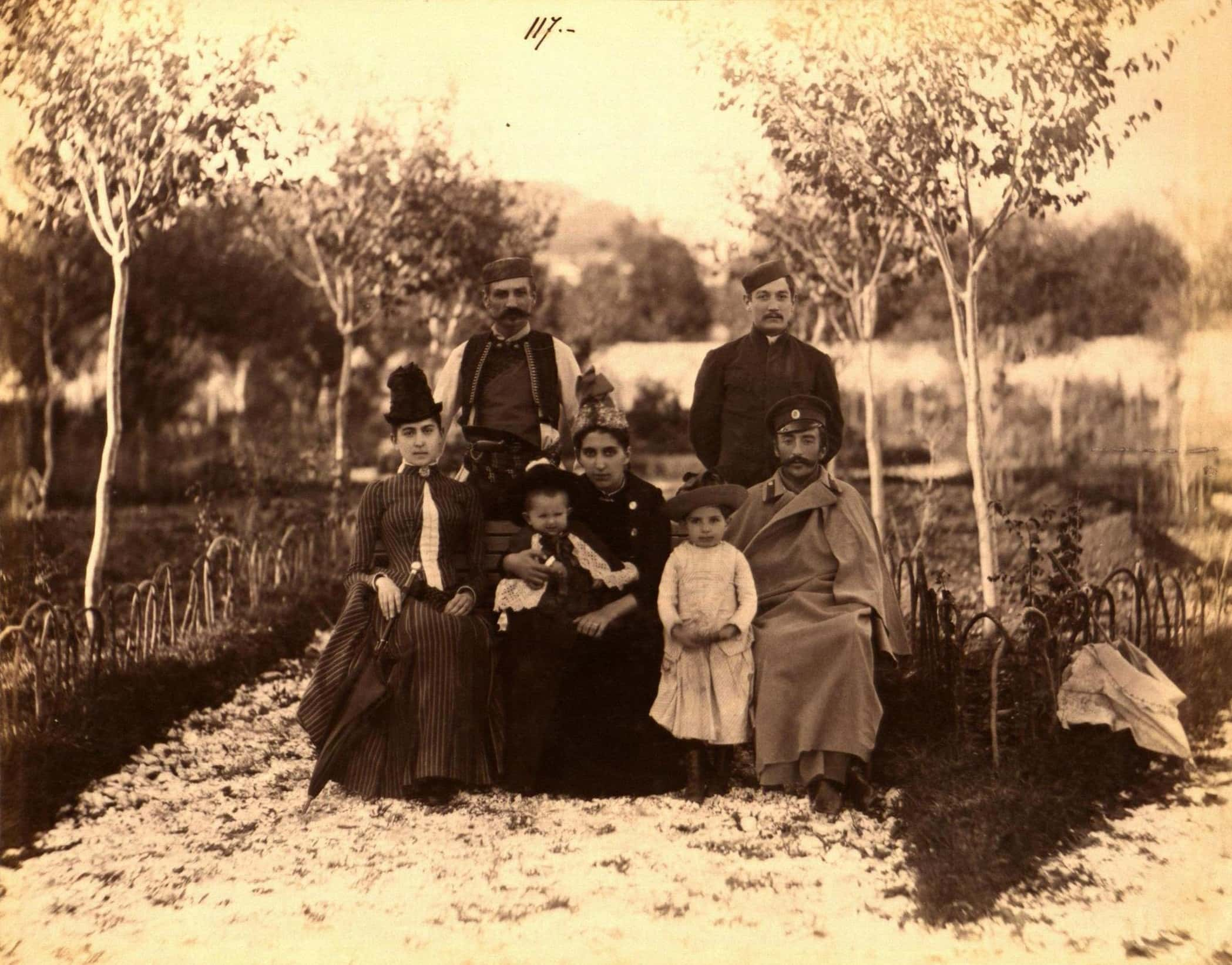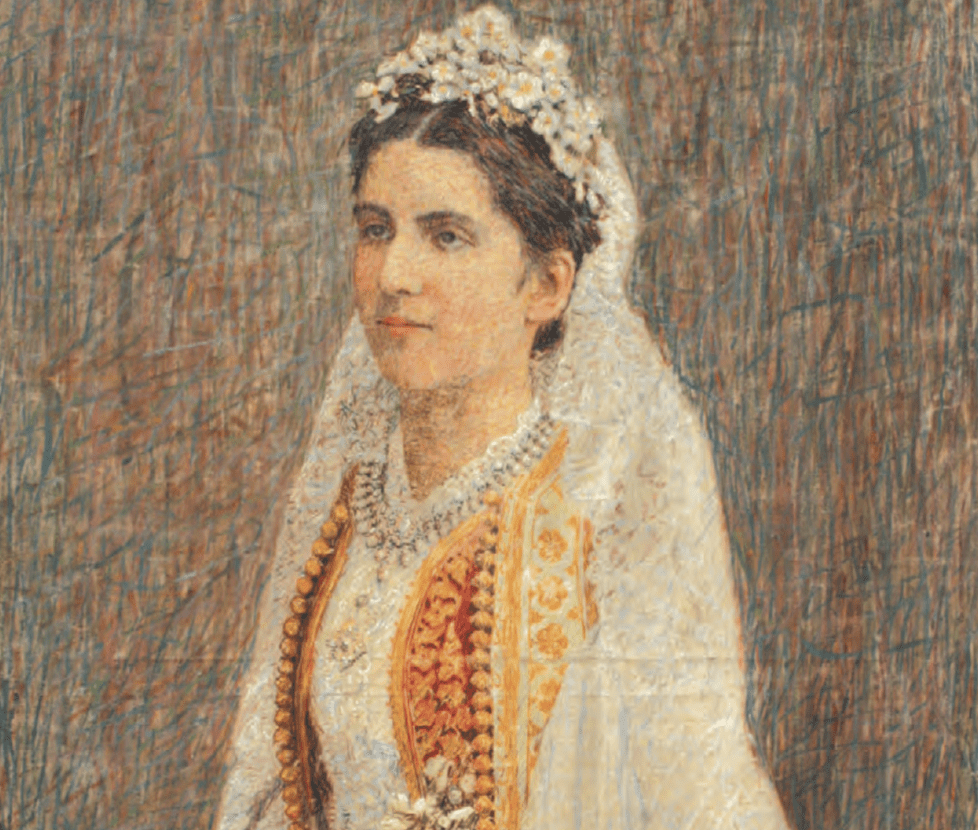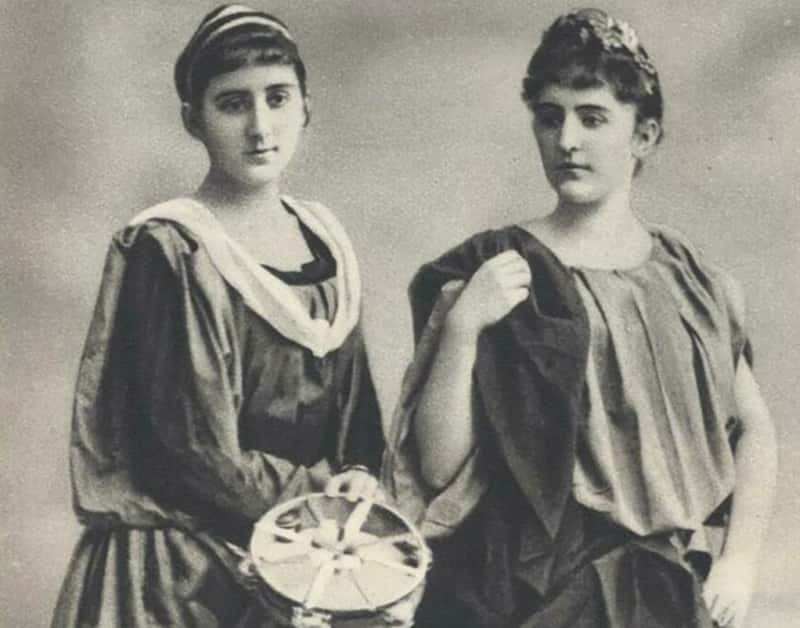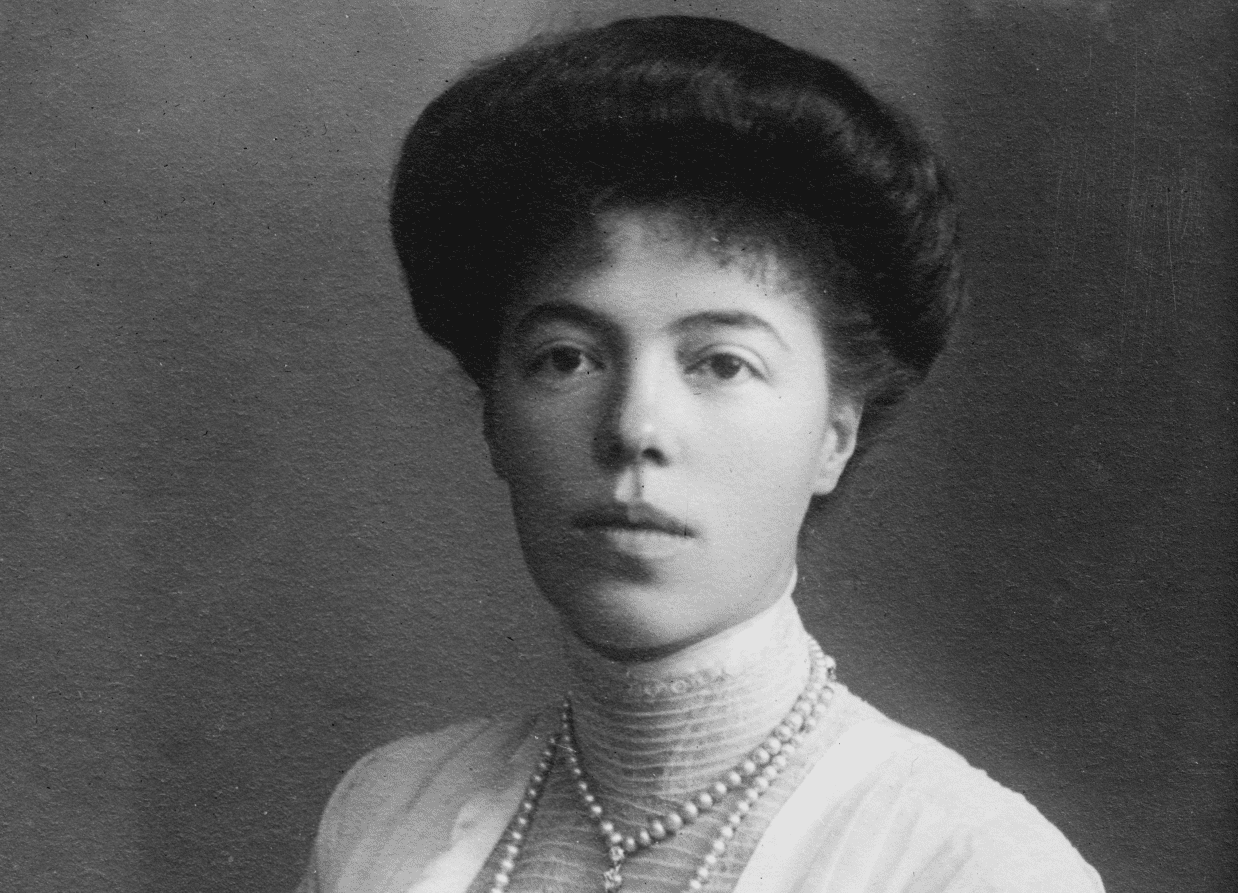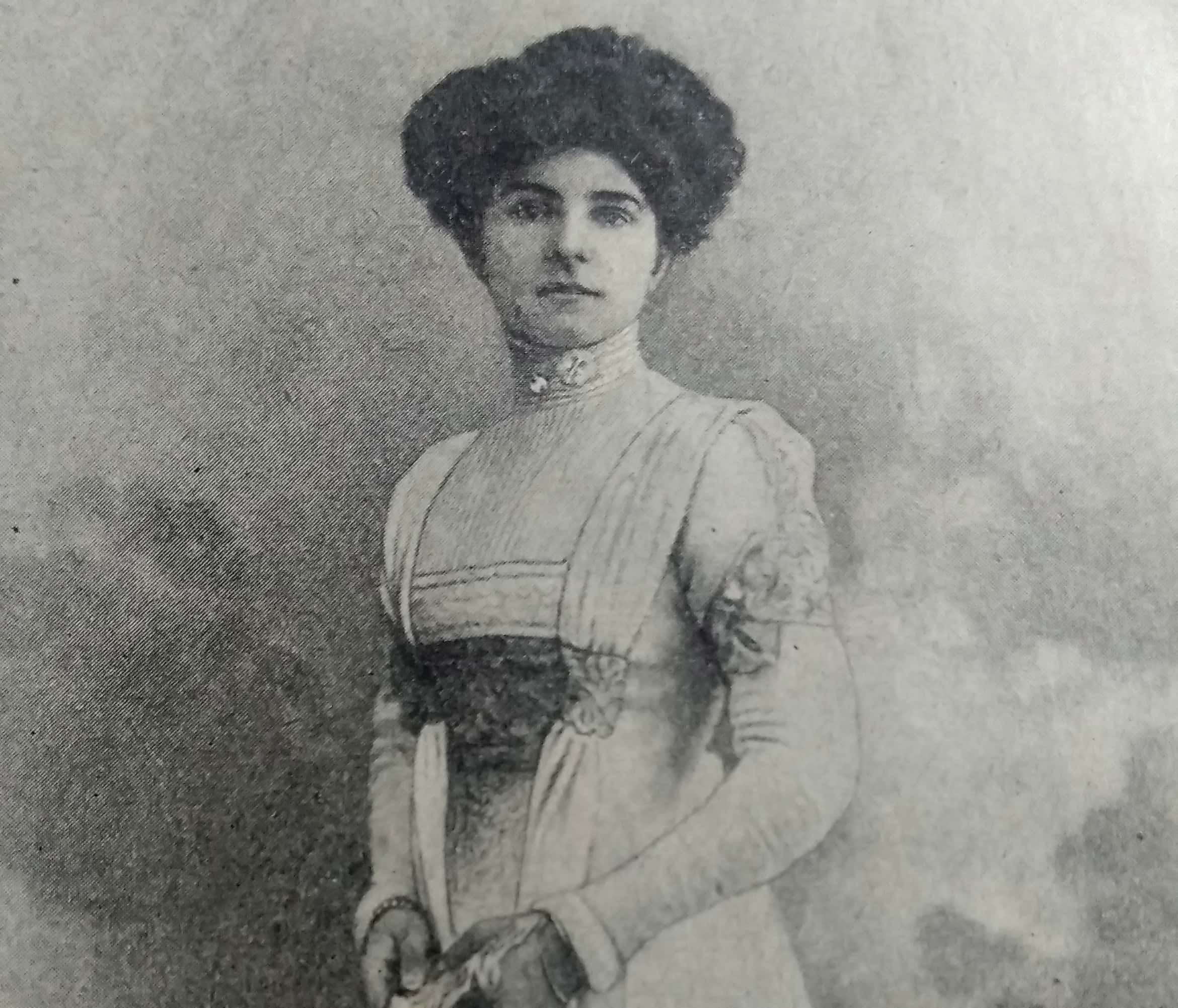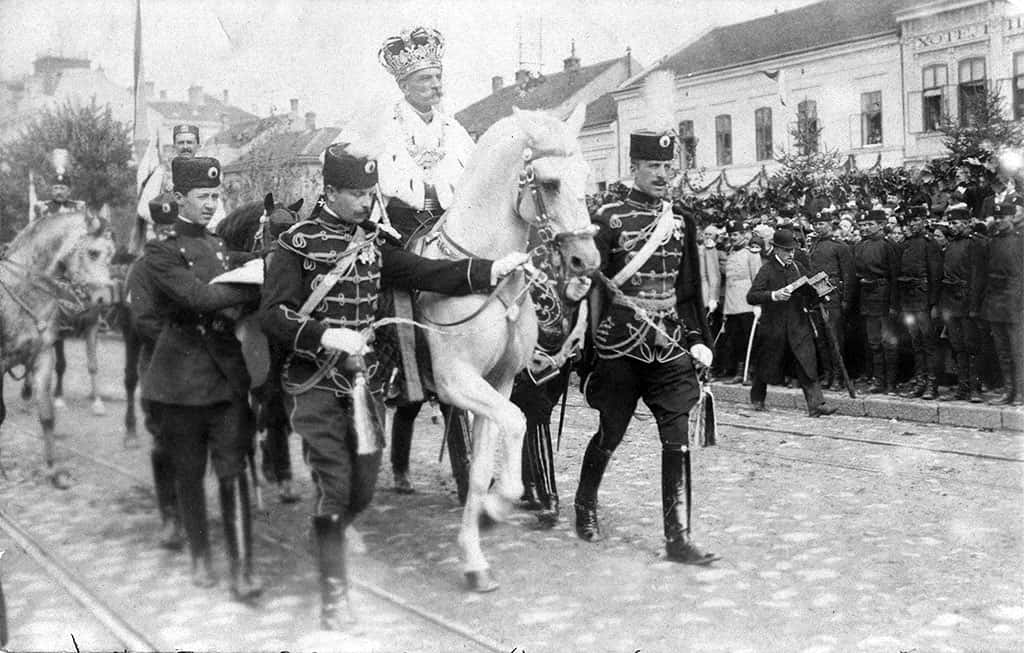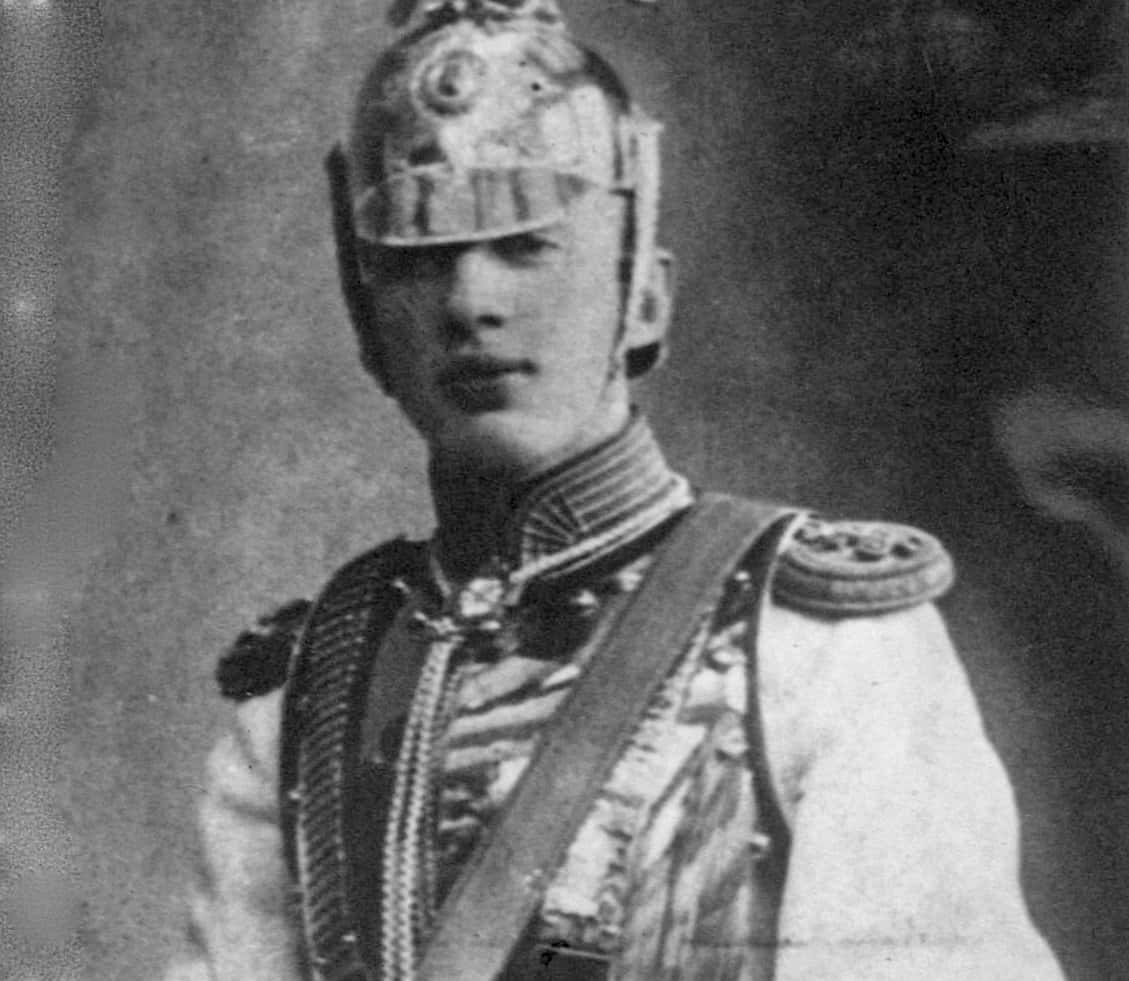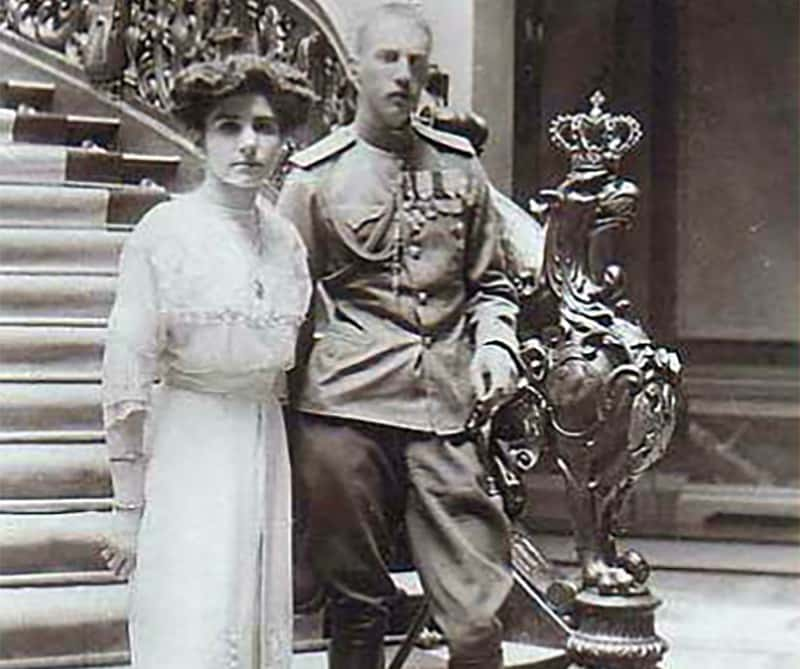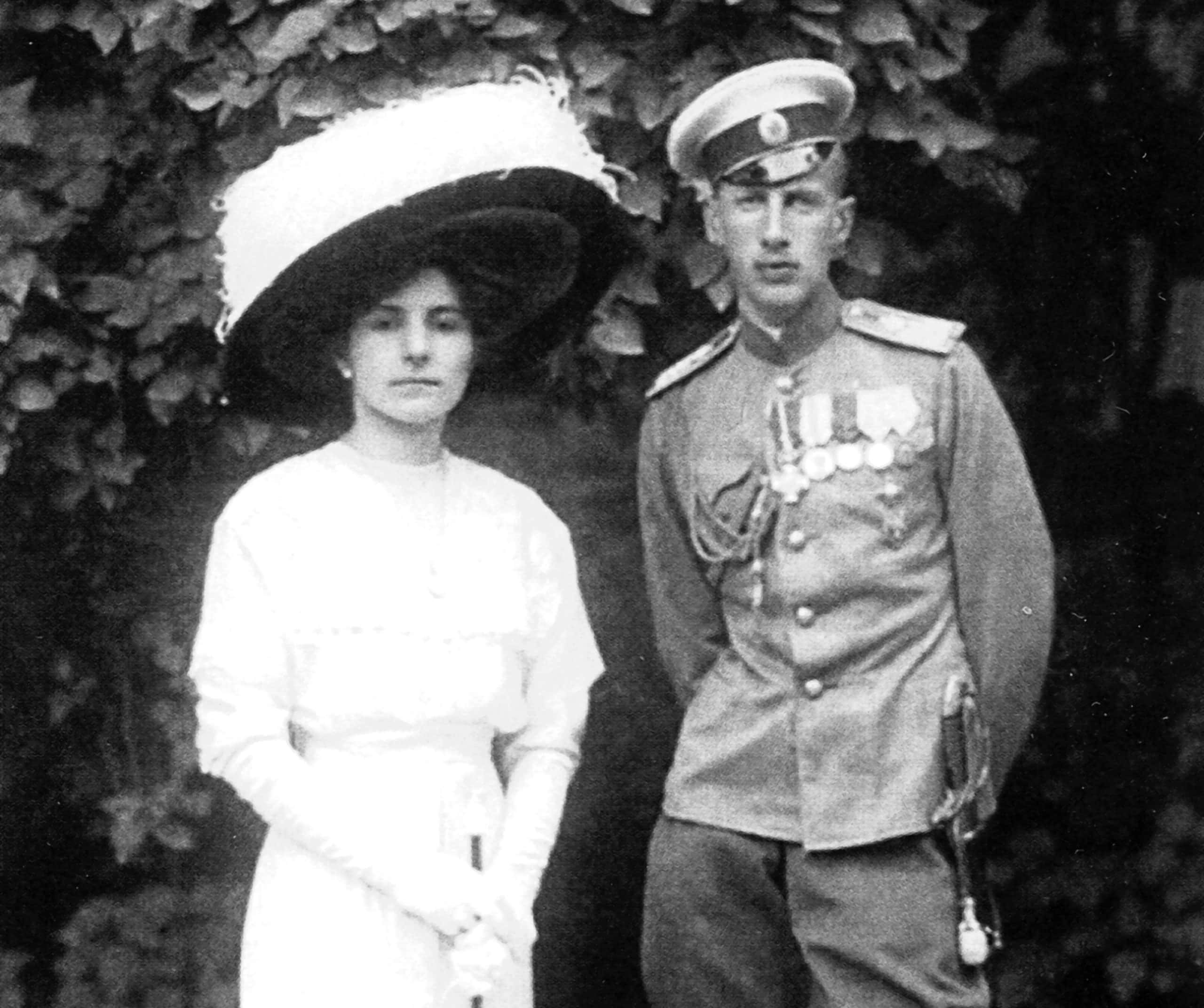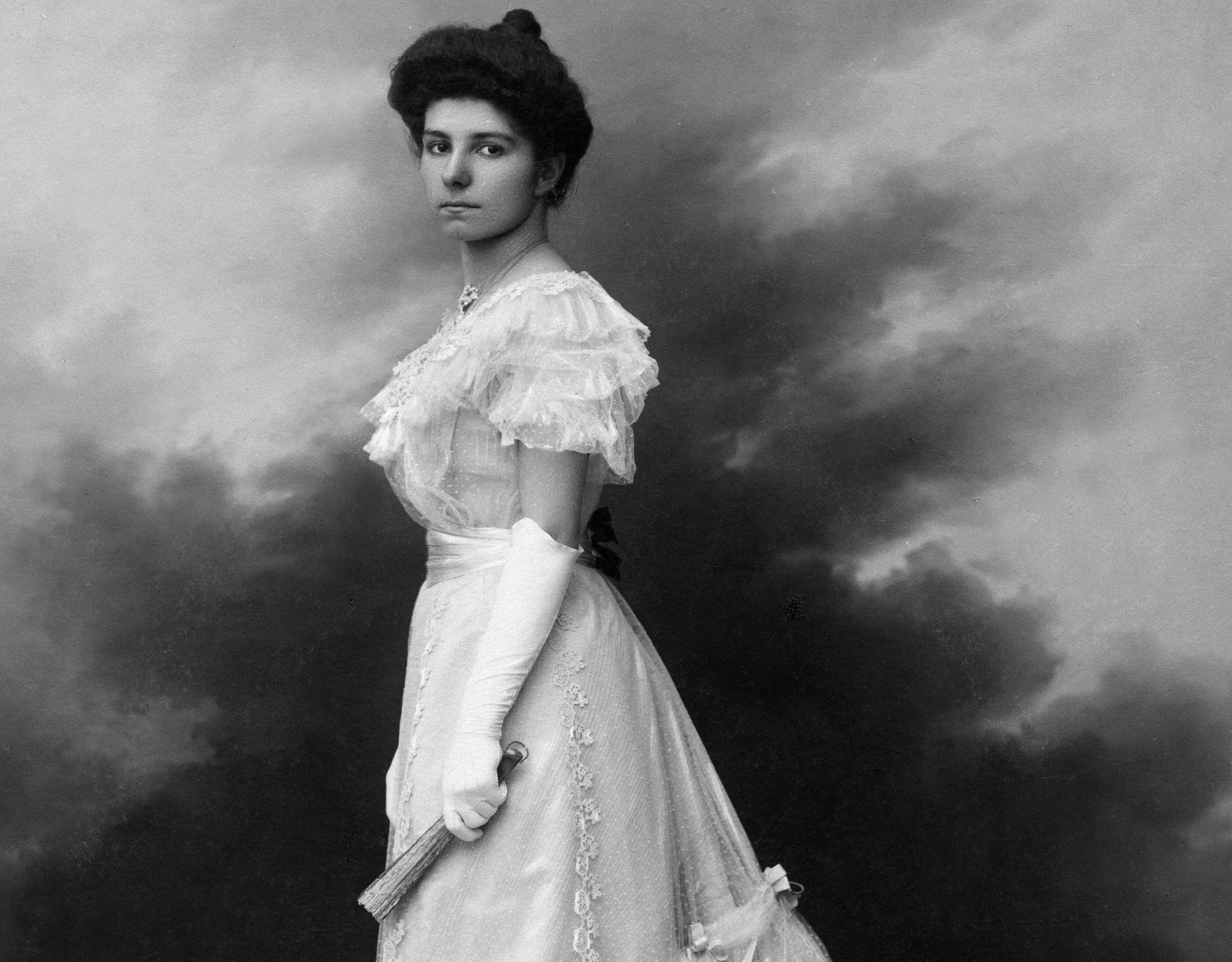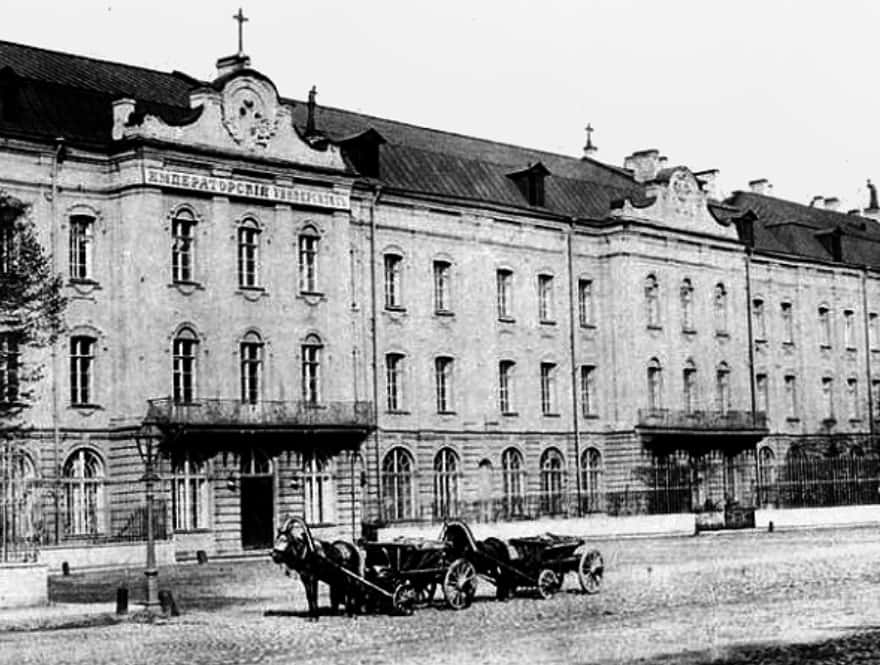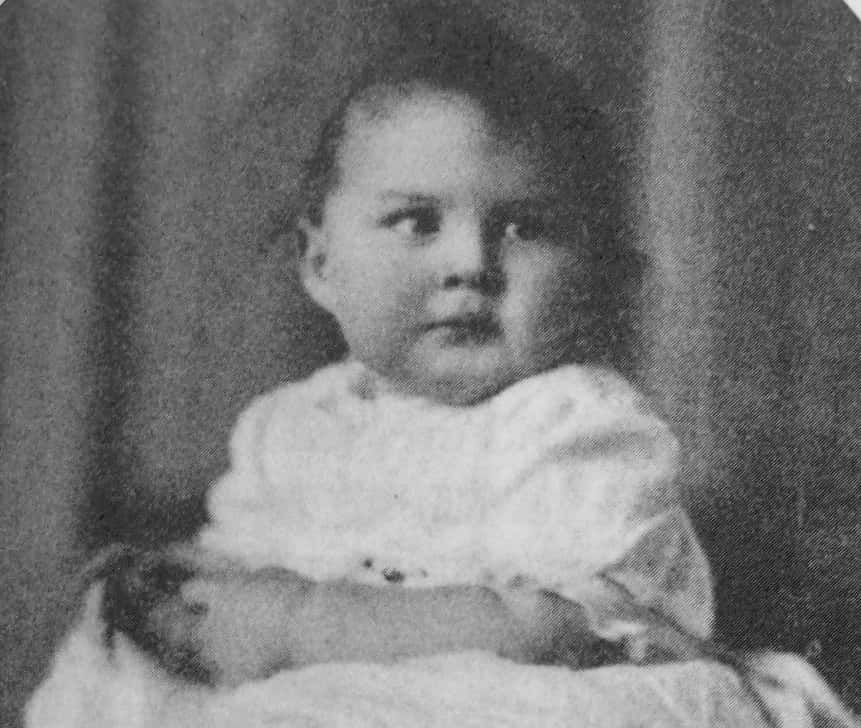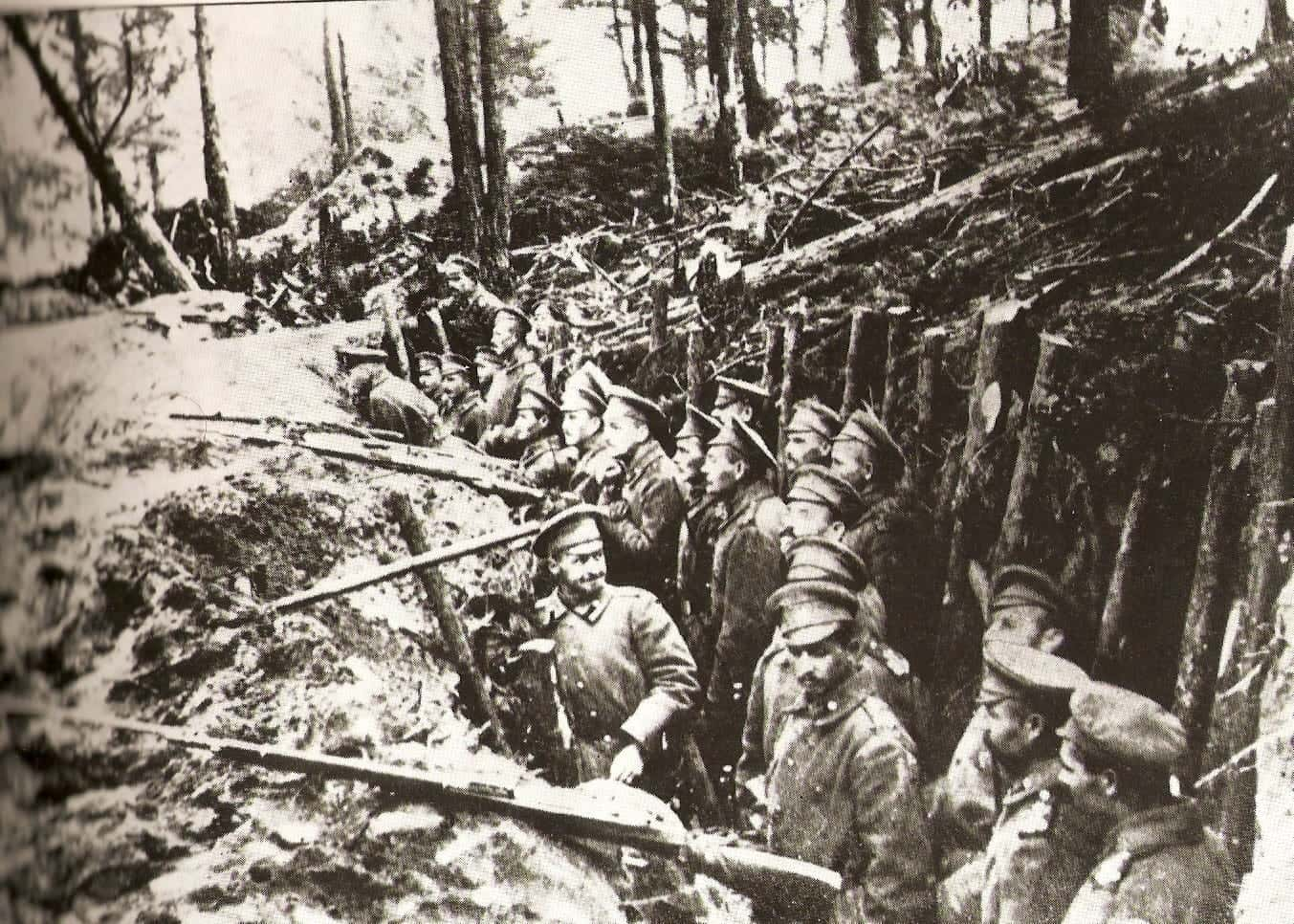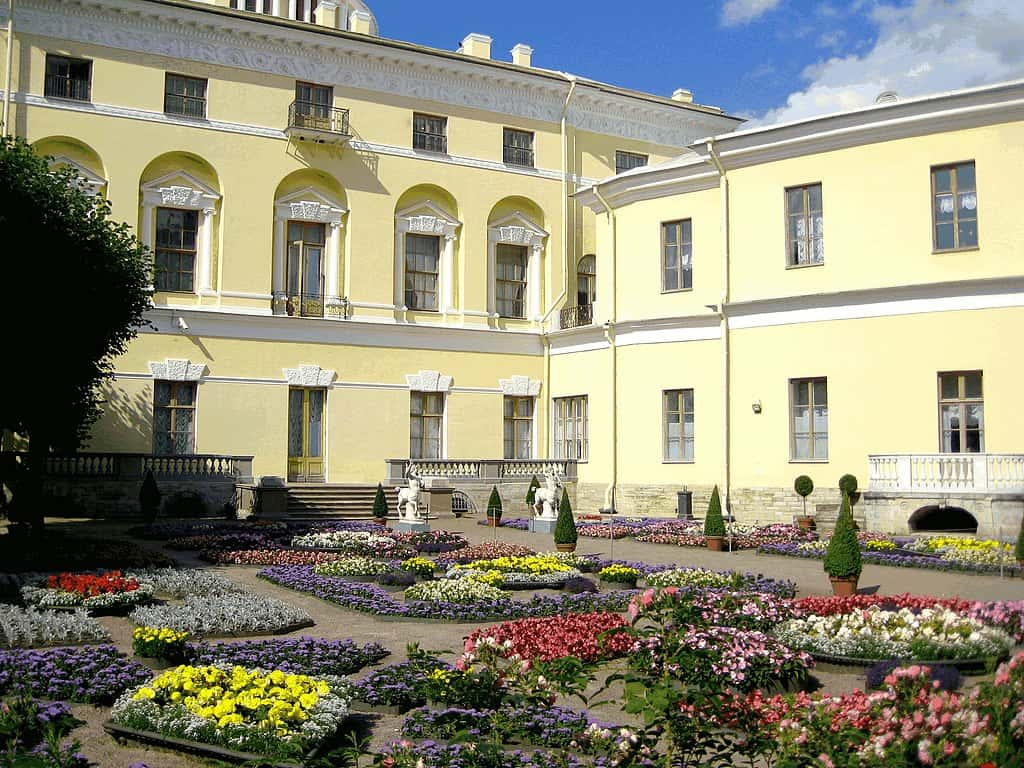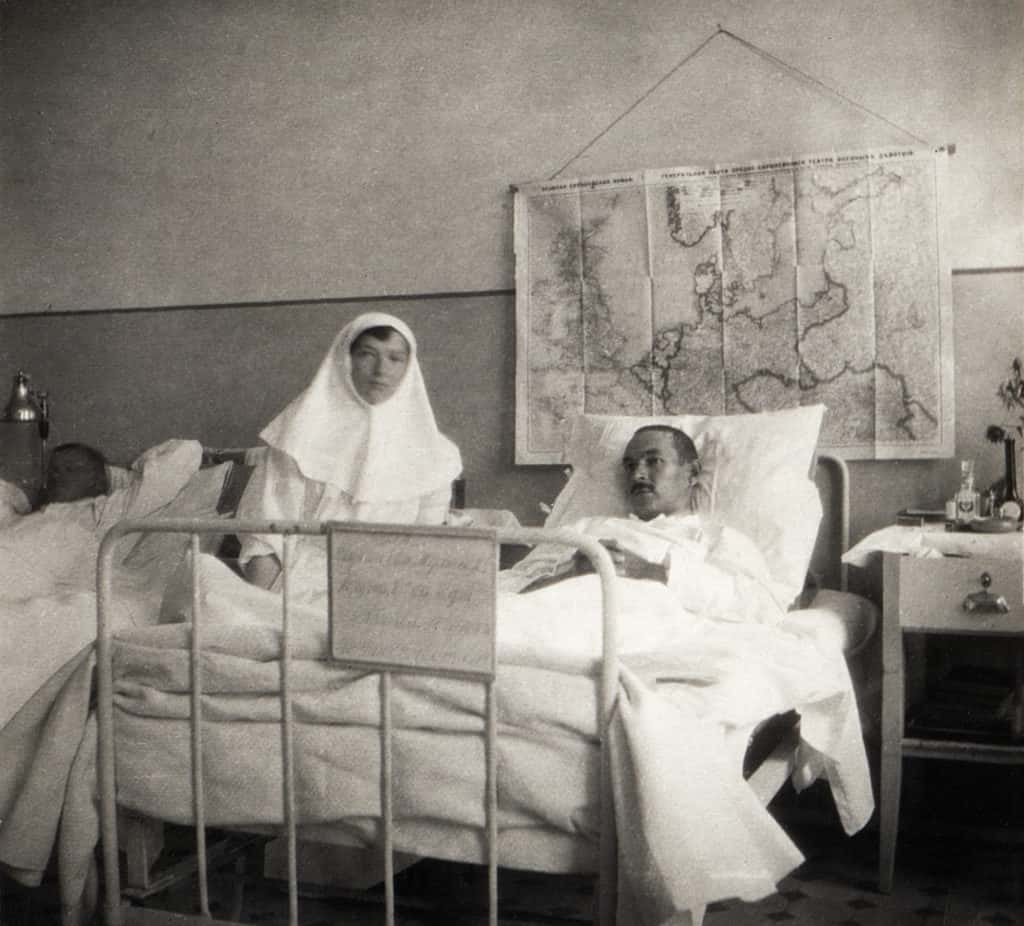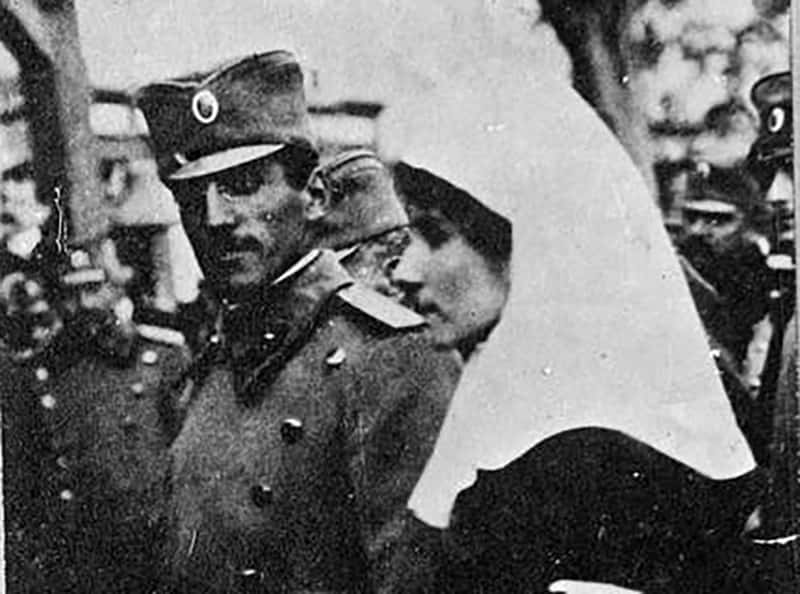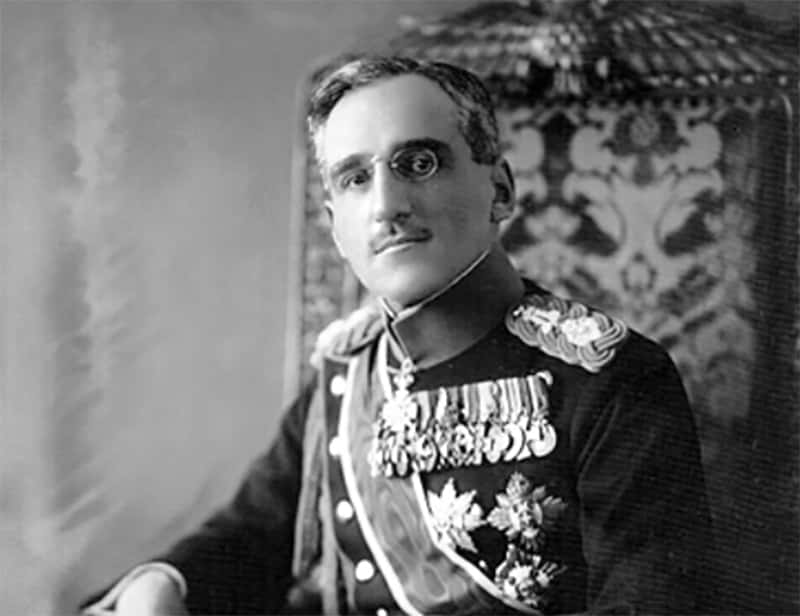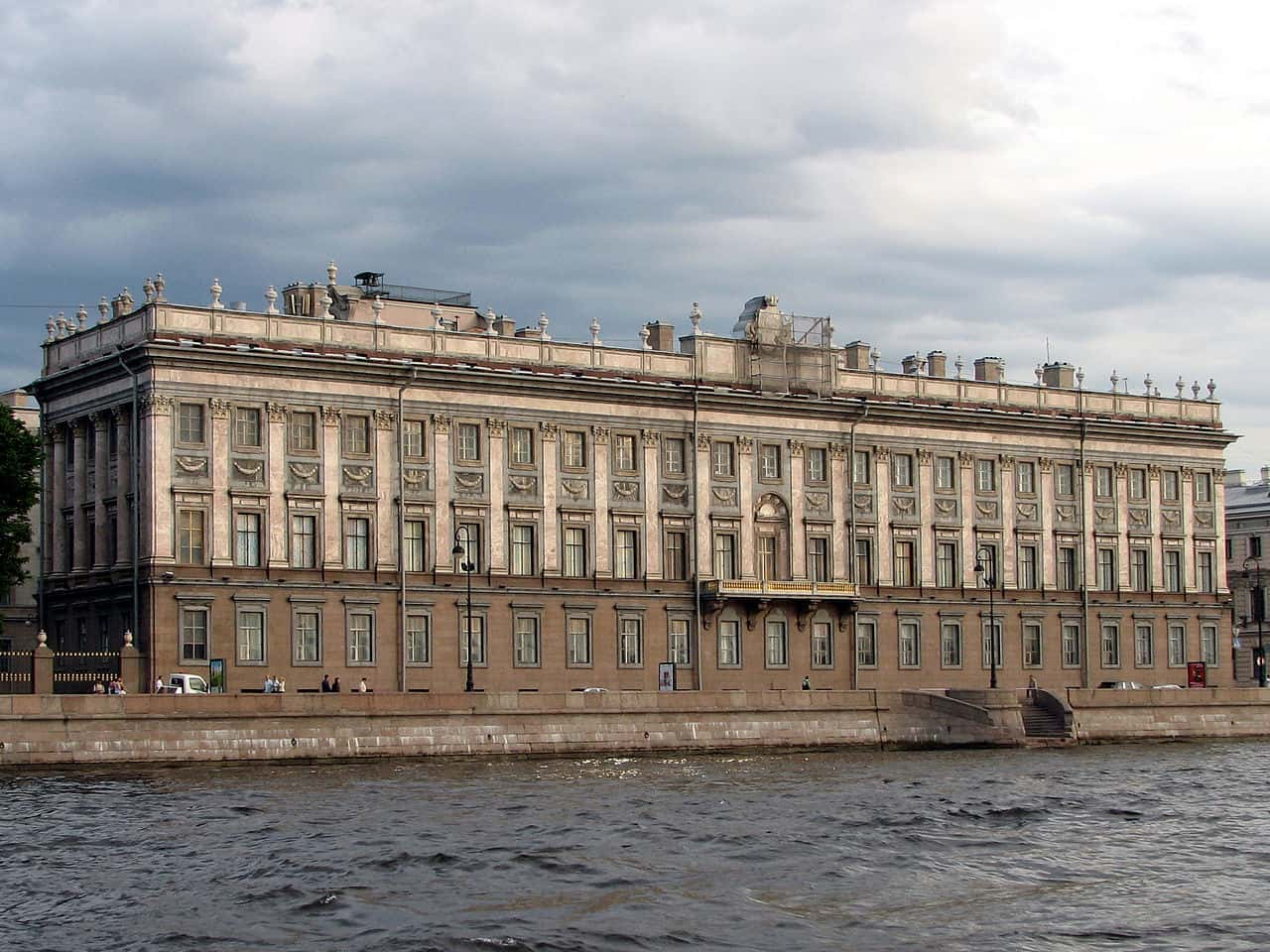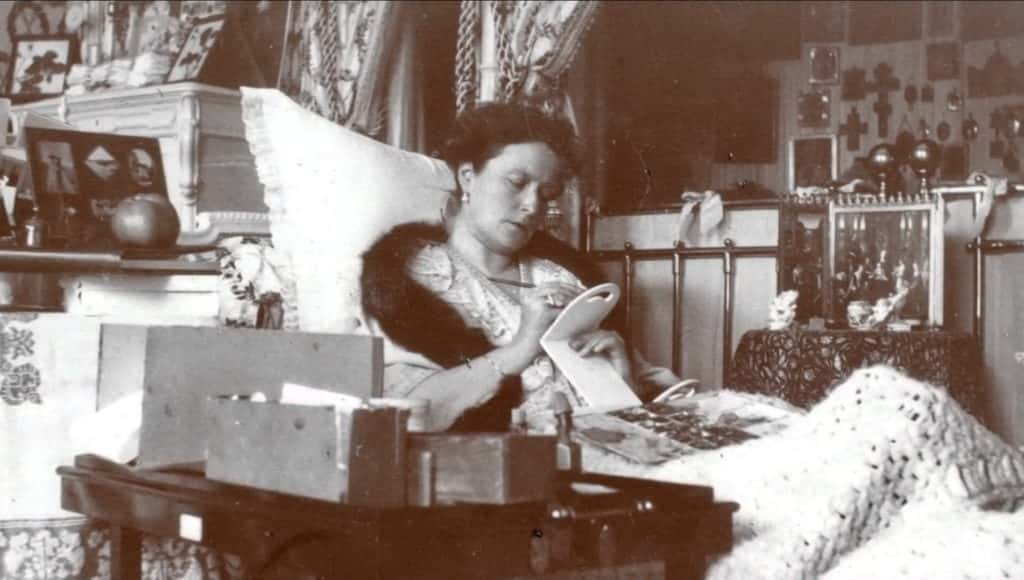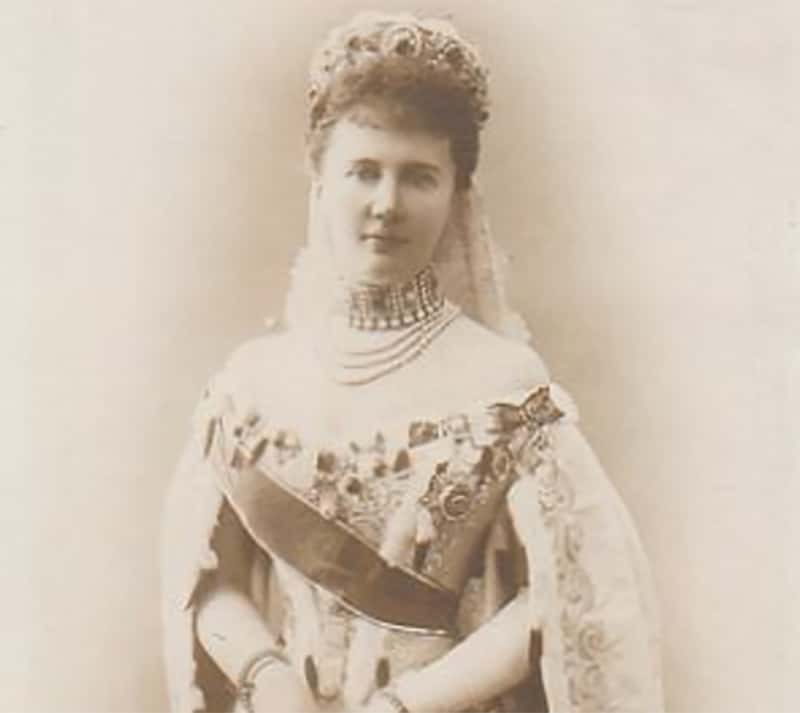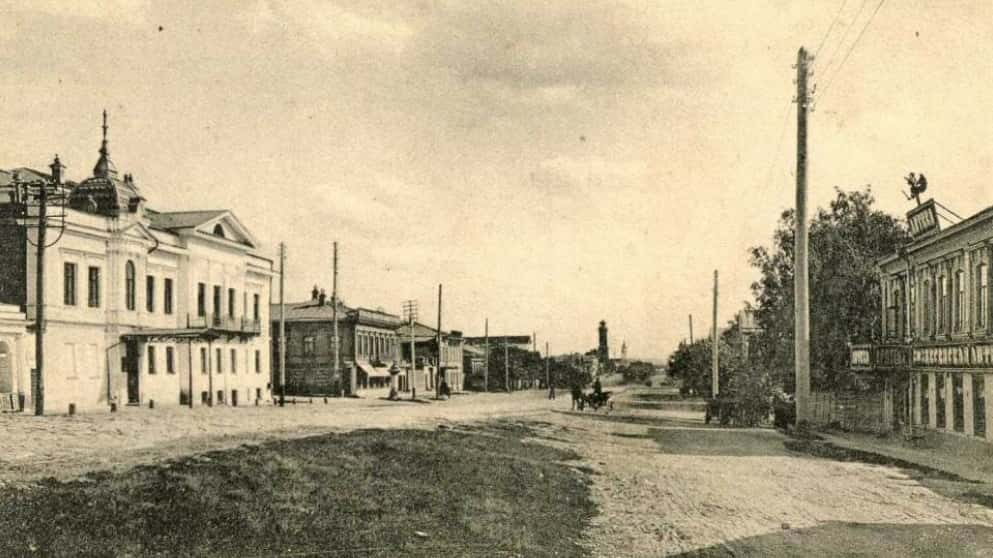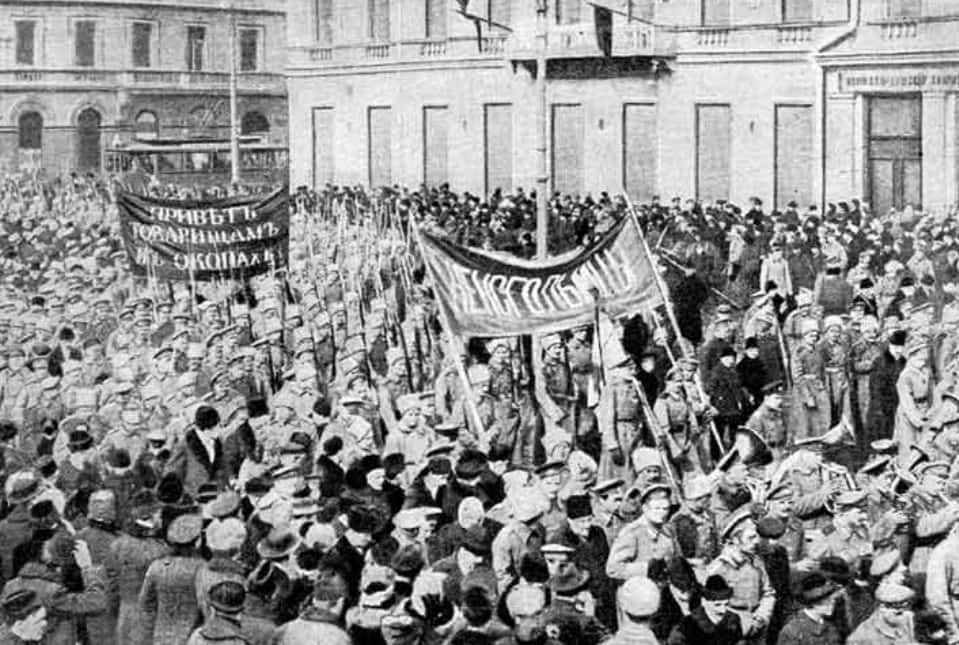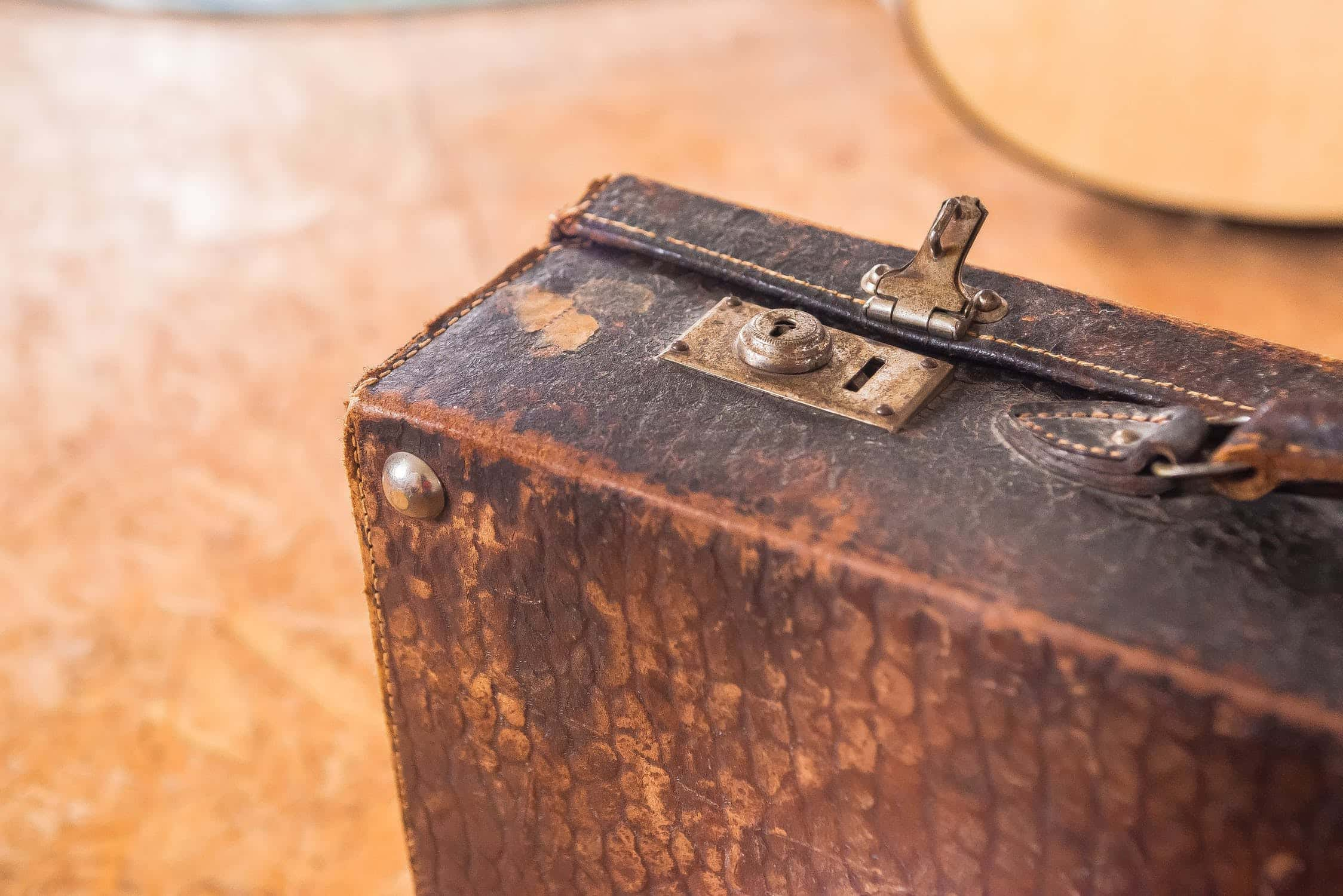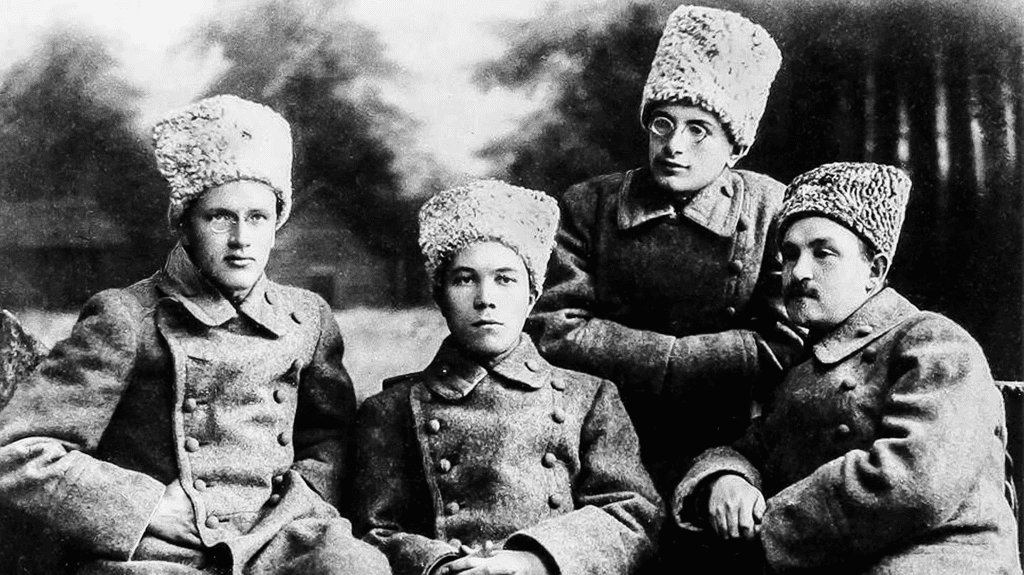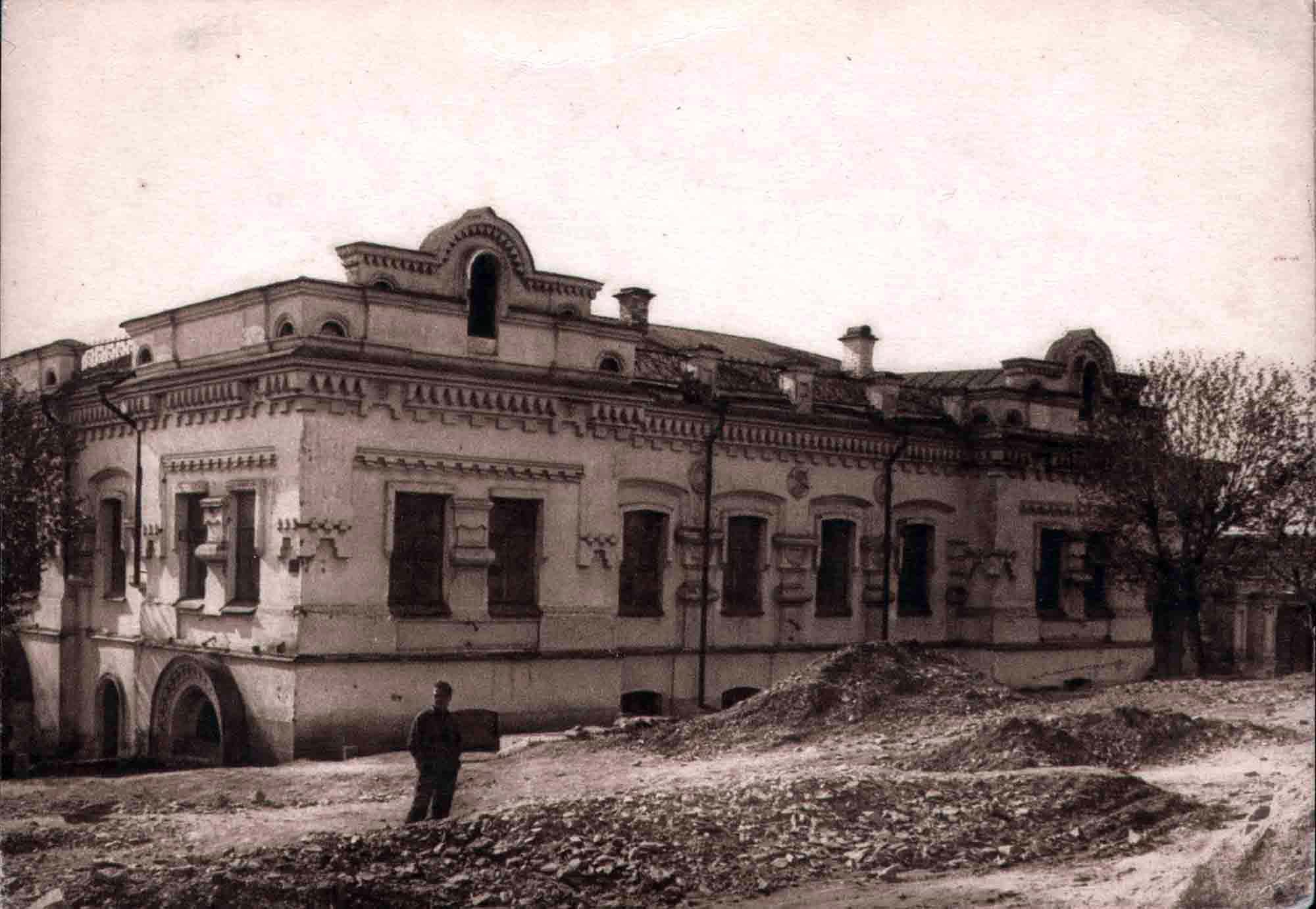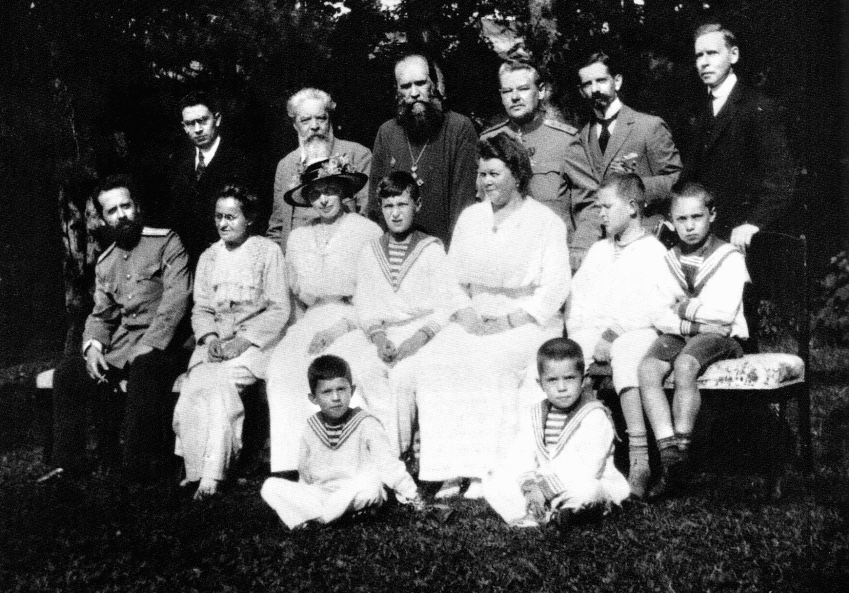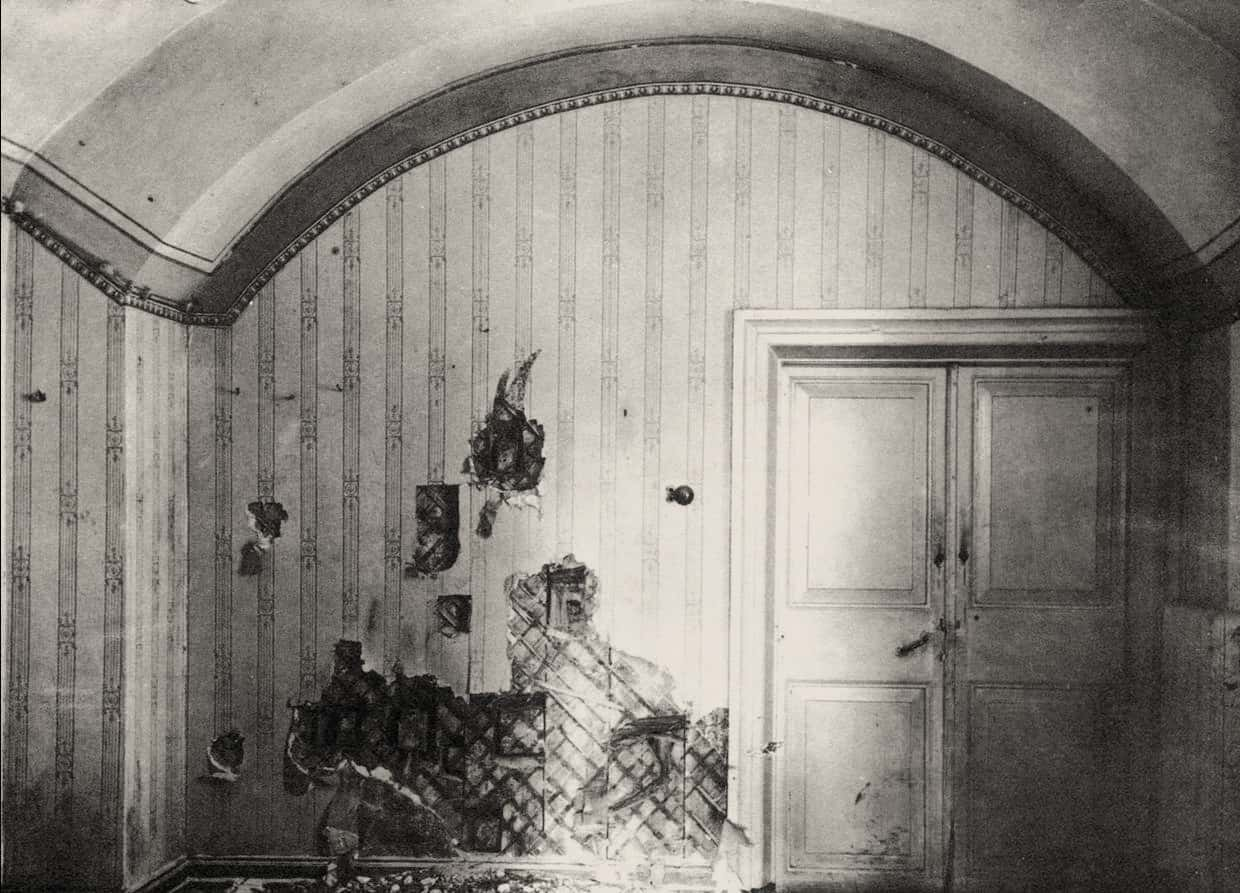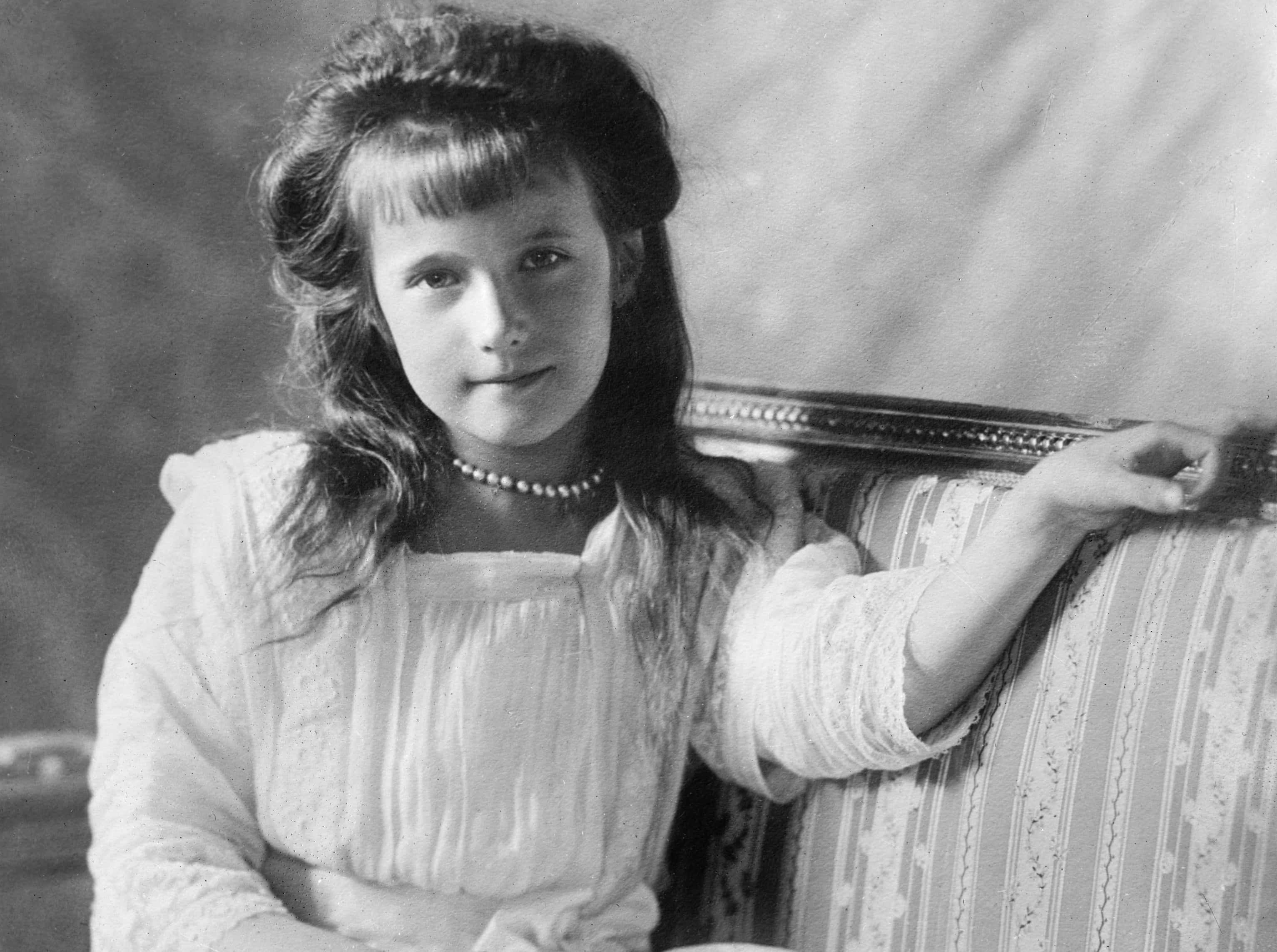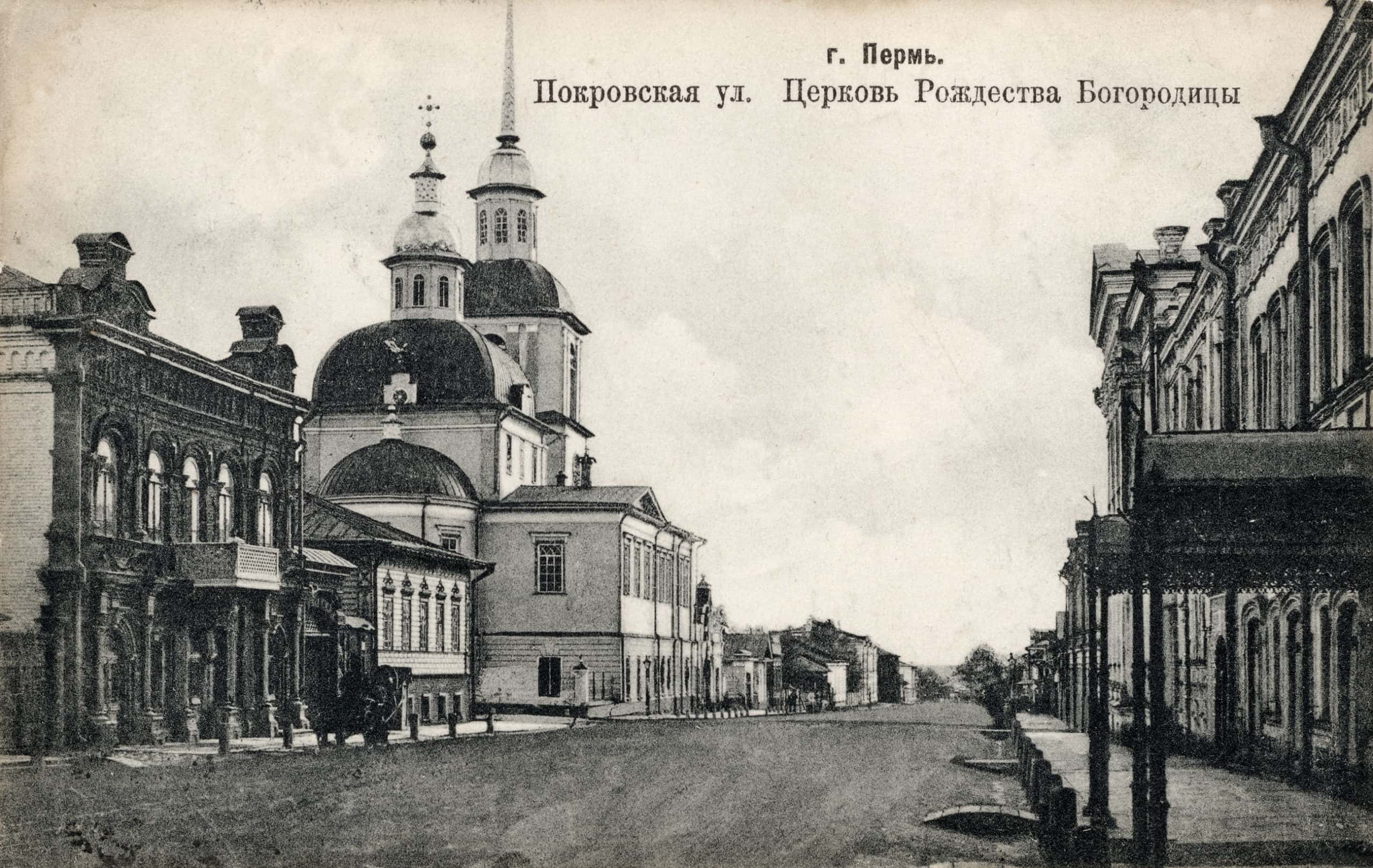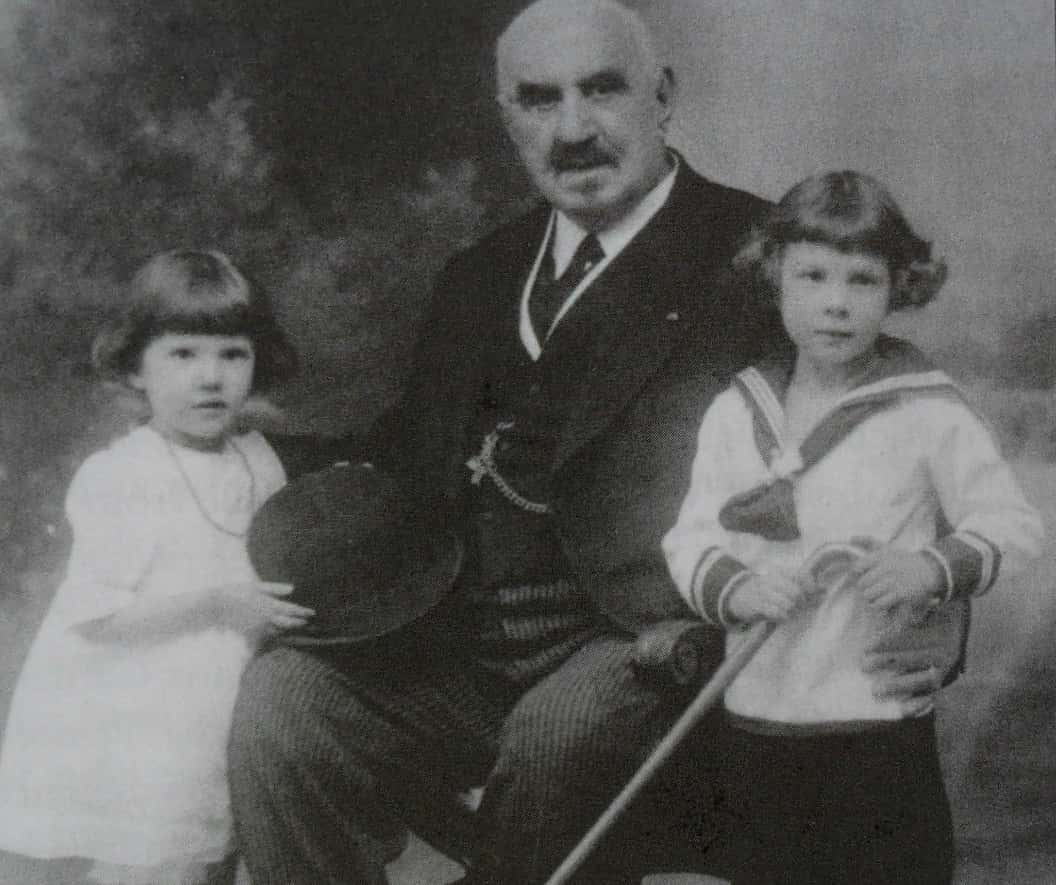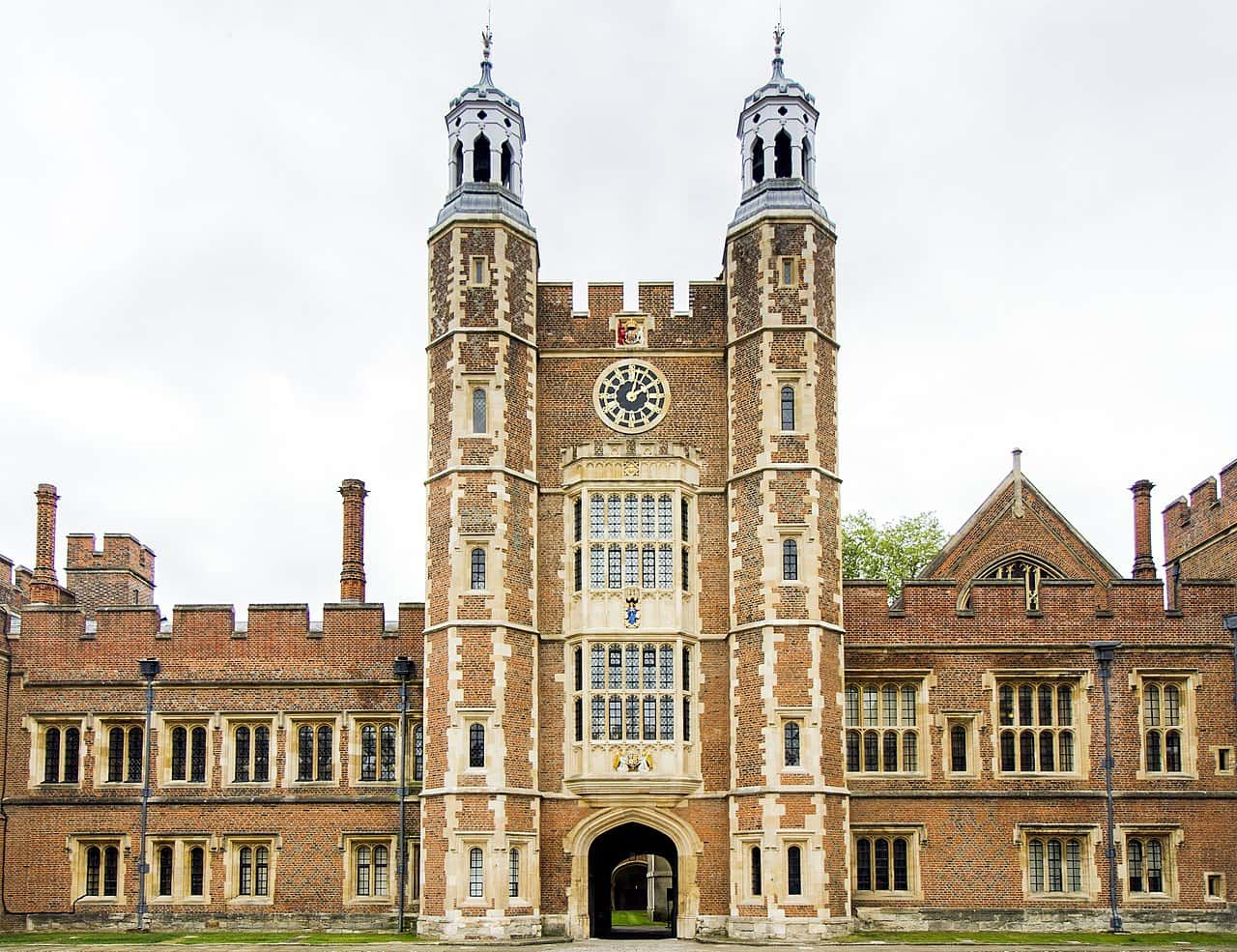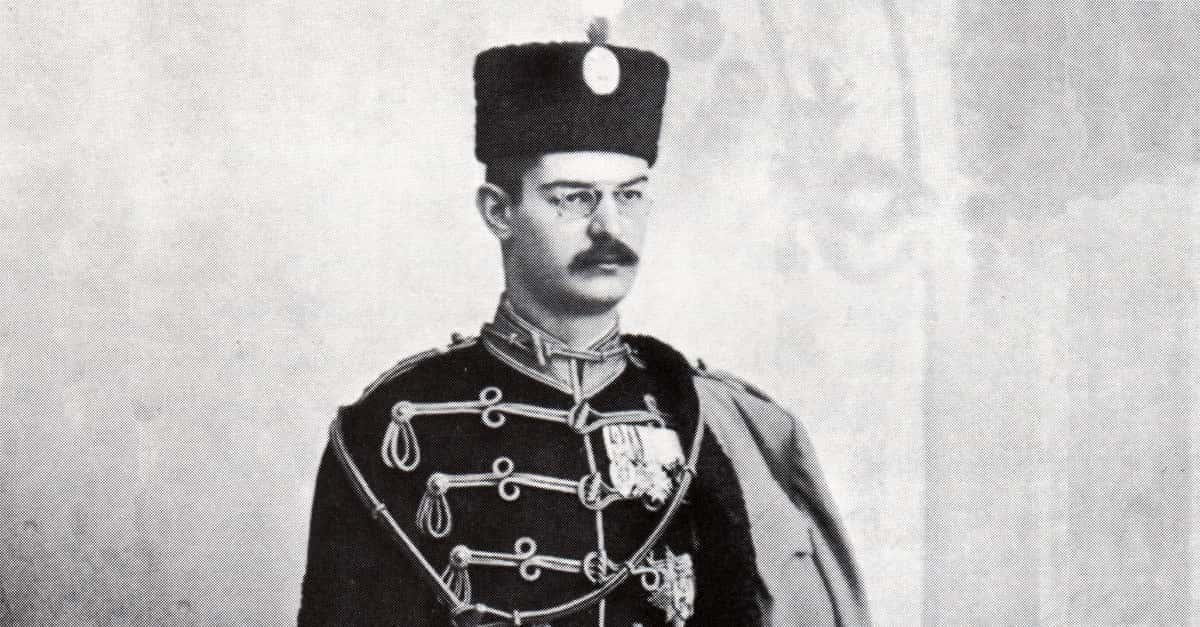Princess or pauper, victim or survivor, Princess Helen of Serbia was a woman who defied labels throughout her life. She’s remembered as one of the few surviving members of the court of Tsar Nicholas II, a noblewoman who faced exile and imprisonment at every turn during the Russian Revolution. But her tragedy goes much deeper, telling a tale of perseverance, persistence, and woe.
1. She Came From Royal Roots
On November 7, 1884, Princess Helen was born within the palace walls of Montenegro’s royal city, Cetinje. Her parents, Serbia’s Crown Prince Peter Karađorđević and Princess Zorka of Montenegro, the oldest daughter of the King, felt that Helen had a destiny to live the privileged life of royalty—or so it seemed.
2. She Was Born In A Time Of Unrest
Despite her royal roots, Helen was no stranger to the difficulty of political uproar. She was born in political exile from her father's native Serbia. The Obrenović clan, rivals to her father’s family, had seized the throne from Helen’s grandfather 30 years earlier and outlawed his entire dynasty. This would not be the last time that Helen would face such exile. Indeed, much worse was coming.
3. Her Family Went Through Unbelievable Tragedy
Princess Helen was also not a stranger to tragedy. At the age of three, she lost her baby sister, Princess Milena, to childhood illness—but that was just the start of her nightmare. Even more tragically, in 1890, Helen lost both her mother and her youngest brother, Prince Andrew, due to complications from childbirth. Helen was only six years old.
That’s a lot of hardship for one small princess to face—but more was on the way.
4. She Had A Feisty Family
Even though she had lost her mother, Helen was not left without motherly guidance. Helen’s maternal aunts, Princesses Anastasia and Milica, took care of their young niece from the age of six onward. Known in the Russian court as the “Montenegrin princesses,” they often advocated for their native Montenegro before the tsar. They taught Helen to fight for family, a lesson she took with her into adulthood—as we’ll see.
5. She Was Part Of A Long Tradition
However, the main reason that Helen came to Russia was to attend the Smolny Institute of Noble Maidens in St. Petersburg. This was THE place for young Eastern European noblewomen to learn proper etiquette and social graces. Helen’s mother and aunts had attended before her. Helen went to Smolny for nine years, making some very influential friends along the way.
6. She Had Friends In High Places
Some of her friends happened to be the highest-powered ladies in the land—the daughters of Emperor Nicholas Romanov himself. Helen often visited with the Grand Duchesses when she was about 17 years old, according to their governess Margaretta Eagar. More than any other of the Romanovs, Helen struck up a quick friendship with the Grand Duchess Olga, and they would often have tea together.
Helen and Olga stayed on good terms with each other throughout their lives. Sadly, in just a matter of a few years, they would be ripped apart.
7. She Had One Famous Feature
Though the Russian court did not consider Helen to be the most beautiful woman around, they knew her for her dark features, particularly her eyes: “She was a very sweet-faced though plain girl, with beautiful dark eyes, very quiet and amiable in manner,” wrote Margaretta. It was those eyes that would win her the heart of a prince.
8. She Won Her Throne Through Violence
In 1903, Helen’s father Prince Peter took back the throne of Serbia in a bloody coup d’etat, making her a true Serbian princess. But the violence of this takeover shocked her new friends. They worried about what a major change it is, and the Romanov’s governess remarked that it must have been jarring for Helen to live among the assassins who’d taken out her father’s predecessors.
Well, by this time, Helen was already developing an iron will, so it barely made a dent in her armor. Either way, some relief was on the horizon.
9. She Went On A Blind Date
In the summer of 1911, Helen’s aunt Queen Elena of Italy invited her to visit. What Helen didn’t know was that the Queen had a devious plan in mind for her. She planned to introduce her niece to the handsome Prince John Constantinovich of Russia. The two hit it off immediately, proceeding to fall head over heels for one another in the Italian countryside. Truly, it was the beginning of a beautiful love story—with enough curveballs for a rom-com thrown in for good measure.

History's most fascinating stories and darkest secrets, delivered to your inbox daily.
10. She ‘Saved’ Her New Husband
Like any good love story, Prince John soon decided to propose to Helen not long after their first introduction. This came as quite a shock to John’s family, though—they expected him to join a monastery and become a Russian Orthodox monk! He had considered becoming a man of cloth before meeting his one true Serbian princess. The family took all this in an unexpected way.
11. She Dressed To Impress
Despite this initial surprise, however, there was no bad blood between Helen and her in-laws. In fact, on the day of her wedding, September 3, 1911, she wore the red ribbon insignia of the Order of St. Catherine on top of her silver brocade wedding dress. This was the only female-specific chivalric order in Imperial Russia. The sash was a symbol of her commitment to Russia and its royal family, which included John’s family. And that wasn’t the only way she showed her dedication…
12. She Changed All Her Names
Helen took her marriage vows so seriously that she didn’t just take her husband’s family name—she also decided to change her first name, too. Following the wedding, she began to introduce herself as “Yelena Petrovna of Russia”, a more Russianized spelling of her given name. Once again, Helen demonstrated her commitment to her new family and people—a commitment she would fight for with everything she had.
13. Their Starter Home Was A Palace
Helen’s in-laws loved their new daughter-in-law so much that they invited the couple to live with them in the family home, Pavlovsk Palace. This palace belonged to John’s family since the era of Catherine the Great, and it overlooked the countryside of St. Petersburg. John and Helen lived in one of the wings of this quiet country palace, seeing it as the perfect place to start their marriage—but that wasn’t all she was doing.
14. She Was One Of Only A Few Women
Helen spent the first few years of marriage not just living it up in the palace but also studying medicine at the Saint Petersburg Imperial University. She wanted to be a medical professional and help the Russian people with their ailments. Sadly, she’d get her wish far too soon. Trouble was brewing in Europe, and Helen would find herself in a dangerous spot—but that wasn’t the only change on the way.
15. She Quit Her Studies
On January 20, 1914, Princess Helen gave birth to a son while vacationing in the Marble Palace. She and her husband named the child Vsevolod Ivanovich and the Tsar declared him a Prince of the Imperial Blood the following day. To cope with the new responsibilities of motherhood, Helen was forced to make a heartbreaking choice. Eventually, she decided to quit her studies. Still, that wouldn’t stop her from continuing to help others any way she could.
16. She Worked On The Front Lines
As WWI broke out, John and Helen each found themselves facing a terrifying new reality. John went out as an officer to fight at the front lines. Meanwhile, Helen joined him at the front as well as in the city’s hospital to work as a nurse. Though she took her medical work very seriously, Helen continued to be a dedicated wife and mother, a job that would soon double in difficulty.
17. She Had Her Second Child In The Middle Of WWI
Adding to her motherly joy was the arrival of Princess Catherine Ivanova on July 12, 1915. Born at home in the Pavlovsk Palace, Helen had to take some time away from her nursing duties to take care of her new baby. But it wasn’t long before she was back on the front lines, risking her life to serve her adopted country.
18. She Performed Urgent Favors For Royalty
All of Russian aristocracy knew of Helen’s skill as a nurse and dedication to help others. So when Olga’s younger sister Grand Duchess Tatiana asked Helen to help with Serbian refugees, she knew that the princess wouldn’t hesitate to say yes. Helen made the harrowing journey to Odessa all by herself to take care of these stranded Serbian officers—and she didn’t stop there.
19. She Never Forgot Where She Came From
Helen’s loyalty to Russia never overshadowed her loyalty for Serbia. As far away as she was, Helen always remained involved in protecting the well-being of Serbia and its citizens. She helped sponsor the Serbian Relief Fund in America along with her brother, Crown Prince Alexander of Serbia. She was also a patron of the committee to help manage this fund.
Helen never forgot her Serbian friends and family—especially not her brother.
20. She Had Plans To Set Them Up
Helen’s marriage had been the product of a fix-up—so Helen wanted to try the same trick on her brother. And she had one target in mind. That would be her dear friend, Grand Duchess Olga. She believed that Alexander had developed feelings for Olga, and plotted ways to bring the two of them together. Though circumstances had become more complicated during WWI, she still held hope that Alexander and Olga would find each other when life got better. However, things were about to get so much worse.
21. The Russian Revolution Kept Them Apart
When the Russian Revolution broke out in March of 1917, Helen’s entire life was thrown into chaos. John was still on the front lines when he lost contact with Helen in Pavlovsk. They were unable to reach each other for months during these mutinous revolts, many of which targeted officers like John. Princess Helen grew more and more desperate for news of her husband.
Finally, he made his way home, alive and mostly well. It was a relief—at first.
22. The Revolution Forced Them From Their Home
John and Helen’s reunion was bittersweet. Though they felt relieved to find each other whole and hale, they both realized that life was changing in Russia for the worse and that their family was going to be in trouble if they remained tucked away in the countryside. And so John and Helen moved their family to the Marble Palace in the city, leaving their home behind.
23. She Illegally Aided The Tsarina
Before moving, however, Helen snuck into the Alexander Palace undercover in order to offer the trapped Empress Alexandra some help. Dressed in her nurse’s uniform to avoid suspicion, Helen managed to track down information concerning the now-abdicated tsar’s whereabouts, which the tsarina greatly appreciated. This would be the last time that Helen saw her friends alive.
24. She Followed Her Husband Into Exile
In April of 1918, the Bolsheviks brought terror into Helen’s life once more. They outlawed all the male members of the imperial family, which included her husband John, and sent them to the Ural Mountains. Helen decided to voluntarily follow her husband and his family into exile, leaving her two young children in the care of her mother-in-law, Grand Duchess Elizabeth Mavrikievna, at the Marble Palace. She committed to following her husband anywhere…even to her doom.
25. They Deported Her To A Distant City
With Bolshevik guards herding them forward, Helen and her extended family traveled further and further from their homes. They ended up in Ekaterinburg, a city on the other side of the mountains, where Bolsheviks placed them under house arrest in the Palais Royale Hotel. Meanwhile, Helen was a free woman, able to go where she wished—but all she wanted was to stay close to John.
26. They Sent Her To The Middle Of Nowhere
By the end of May, the Bolshevik guards would grant Helen her wish. They sent the family to the tiny city of Alpayevsk, where they slept in an abandoned school building away from the public’s eye. Since Helen had the freedom to travel wherever she wished, she did the shopping for the rest of the party. Helen and John shared a room together. Sadly, this was last bit of intimacy they would share with one another.
27. John Convinced Helen To Leave His Side
Helen and John received news that Bolsheviks had taken over most of the palaces in St. Petersburg, bringing famine and sickness to the city. They believed that their children were stuck in Petrograd and feared the worst. John persuaded Helen to return to Ekaterinburg and apply for a permit in order to bring the children back to Alapayevsk. It was their only hope.
28. She Left Him To Save Her Family
Helen left Alpayevsk on June 20—not fully knowing about the terror John and his family would face without her. Guards allowed the family to go outside so they could watch her leave. Years later, Helen wrote about the fear she felt while departing, even asking the driver to stop: “Without a doubt, my dear ones realized how I felt. After making encouraging signals to me, they all turned back to the house. … I was alone. I had left them.”
Unfortunately, Helen still had another challenge in store: saving her children.
29. Bolsheviks Denied Her Requests
Upon returning to Ekaterinburg on June 21, Helen felt alarmed when she found herself trapped there. Though she tried to apply for a permit to gather her children, the chairman Alexander Belebodorov rejected her claim. He also rejected her appeal to return to her husband in Alapayevsk, declaring that such travel was untenable in the middle of a military operation.
Backed into a corner, Helen decided to fight.
30. She Fought The Bureaucracy
Helen waged a battle against the Bolshevik machine. She visited the British consulate each day to request aid for her husband, her children, and herself. She also pleaded for the right to visit the Romanov family, who were being kept prisoner in the Ipatiev House. Additionally, she continually pestered Bolshevik chairman Alexander Beloborodov’s office so frequently that he threatened to detain her.
Princess Helen was a woman on a mission who would not back down.
31. She Tried To Save Them
When neither the British consul nor Beloborodov provided her help, Helen decided to take matters into her own hands—and her methods were devious. She faked an injury in order to connect with Dr. Derevenko, the tsar’s own physician. She whispered a request to help her visit Emperor Nicholas and pass on a message from her. The doctor whispered back that the security was so rigid in the Ipatiev House that he could not be her messenger. Still, Helen refused to give up.
32. She Stood Face-To-Face With The Tsar’s Jailers
Refusing to give in, Helen walked right up to the gates of the Ipatiev House and stared down the Tsar’s jailers. She demanded to speak to the Tsar: “I am the wife of a Romanov interned at Alpayevsk,” she announced, “but I am also the daughter of the King of Serbia…As a relative of the tsar, I have come to hear news of him and, if you will allow it, see him.”
Sadly, they rejected her. While she left without entry, her freedom was still intact…at first.
33. The Secret Police Imprisoned Her
Bolshevik chairman Beloborodov grew fed up with Helen’s demands—so he decided to get her out of the picture. Allegedly, he gave her permission to travel to Petrograd and then had the secret police arrest her while she sat alone in her own train car. Under the command of Yurovsky—the soon-to-be executioner of the tsar—guards stripped and searched before tossing her into the local prison. But that was just the beginning of her ordeal…
34. Bolsheviks Executed Her Friends…
Locked away in a single cell, Helen had no way of knowing the horrors that faced her family. On July 17, Bolshevik officers marched the tsar’s whole family—including her beloved friend Olga—into a small room and shot them. Sadly, the worst was yet to come.
35. …And Then, Her Family
The Bolsheviks had already taken out basically the entire royal family of Russia—but they weren’t done yet. A day later, they forced Helen’s husband Prince John, his brothers, and a number of other friends and family members to travel toward an abandoned mineshaft. What the soldiers did next was so disturbing, it’s unforgettable.
They threw the entire group into the mineshaft, still alive. They then tossed a grenade into the hole after them—but that's not all. When they could still hear voices, they threw another grenade. Then, the started a fire in the hole. Even after all this, when the bodies were eventually discovered, it appeared as though many had survived the initial attacks, only to slowly starve or perish from their injuries.
36. They Kept Her Alive
Princess Helen knew nothing of her husband’s death; she believed the rumor that the prisoners in Alapayevsk had escaped and even feared Bolshevik retribution against her, following John’s supposed flight. However, the Bolsheviks did not execute her. Instead, they transferred her to a prison in Perm where she awaited her fate. Ultimately, Helen would remain in prison for the next five months, completely ignorant to the terrible things that had happened to her family.
37. Her Mother-In-Law Rescued Helen’s Children
Helen also remained ignorant about the difficulties facing her mother-in-law Grand Duchess Elizabeth Mavrikievna as she struggled to provide for the children. In desperation, Mavrikievna reached out to her friends in Sweden and they arranged for the family’s escape in October 1918. Mavrikievna and the children faced several close calls due to the weather, the boat’s stability, and Bolshevik inspections before reaching the safety of Stockholm. There, they could finally negotiate for Helen’s escape.
38. She Was Part Of The Mystery Of Anastasia
Two weeks before her last prison transfer, Bolshevik officers brought a young girl to Helen’s cell—and what they asked was chilling. The girl was calling herself Anastasia Romanova, the youngest Romanov duchess who had allegedly escaped her execution. The guards wanted Helen to identify her. Yet Helen didn’t recognize the girl, not as Anastasia or anyone she’d ever seen before in her life.
The mystery of the youngest Romanov sister lived on. Helen was close to solving her own mystery…the one of what had happened to her family.
39. Norwegian Diplomats Tracked Helen Down
After settling into their new lives in Sweden, Mavrikievna was able to reach out to Norwegian diplomats and request aid for her daughter-in-law, who had been missing for months. The diplomats complied, and the Norwegian Legation of St. Petersburg managed to track Helen down in Perm. The Bolsheviks transferred her one last time to the Kremlin Palace to negotiate her release.
40. She Finally Reunited With Her Children
Finally, once the Norwegians had negotiated and organized her release from Russia, Helen took a Norwegian vessel and reunited with her family in Sweden at long last. After almost two full years away, Helen and her children, now six and four respectively, might have scarcely been able to recognize each other. Despite their tragic loss, they now had all the time in the world to become a family again.
41. They Moved Around Constantly
After their reunion in Sweden, Helen and her family seemed unable to settle for the first few years of their new life, moving from place to place. First, they lived in France. Then, they stayed with Helen’s father, now the King of Serbia, in that country. Finally, they moved to England and remained there for many years while Vsevolod completed his schooling at Eton and Oxford.
42. She Never Spoke Russian Again
John had been the love of Helen’s life and the Romanovs had been her close dear friends. When she learned of her husband’s and his family’s horrific fates, Helen’s reaction was devastating. She never truly recovered from the events of the Revolution, and she never remarried. She also refused to speak Russian with her children or with anyone else because the language upset her so badly.
43. She Moved Out Of Her Empty Nest
Eventually, Vsevolod and Catherine grew up and found themselves entangled in their own adult affairs, like marriage and work. Helen quietly left England to settle in the coastal city of Nice, France after WWII. Here she lived a quiet life, publishing articles and becoming close to French nobles. But her new life was not without its challenges.
44. She Could Barely Make A Living
As the years went on, however, Helen struggled to support herself. She lived off the handouts of her French aristocratic friends and lived as cheaply as possible. She tried to publish her memoirs about her experiences during the Revolution, titled J'etais A l'Ekaterinebourg (or “I Was In Ekaterinburg”), but had to publish through a magazine instead.
By the end of her life, Helen felt the weight of her experiences bearing down on her.
45. She Did Not Recover
On October 16, 1972, Helen came to the hospital with a lung complaint and never recovered. She was 77 years old, and she was all alone. Her family buried her in a cemetery in Nice, where she had spent the remainder of her adult years. Though Helen faced many hardships and tragedies in her life, she taught those around her to never relent in the fight for family.



